What's New?
From the MSOE Center for BioMolecular Modeling
The CBM is Merging with 3DMD!
All CBM Programs to Continue Under the 3D Molecular Designs Banner.
Posted 12-14-2021

The only constant in this world. . . is change. This thought is ringing true at the CBM, where many changes are happening as we speak. And some of these changes will impact our current MAPS and SMART Teams student modeling programs in a very positive way.
The biggest change is that the CBM has left MSOE and officially merged with 3D Molecular Designs. All the programs of the CBM — including summer courses, academic-year webinars for teachers, the Model Lending Library, and MAPS/SMART Teams modeling programs - will continue at 3DMD. This merger is happening at an auspicious time, as 3DMD is expanding its professional educator staff, developing a Model Teacher program and beginning a Phase II SBIR project that will enhance our physical models with Augmented Reality features. At this same time, the CBM has just received a new 5-year NIH SEPA award that will allow us to create new instructional materials related to the topic of infectious diseases and new molecular approaches to prevent and treat them. We anticipate many new student modeling projects related to this topic. These are truly the best of times. . .
What do these changes mean for MAPS and SMART Teams?
- First, we are currently talking with an organization that is interested in adopting the MAPS/SMART Team programs as the focus of their national outreach efforts. If this were to happen (beginning in the fall of 2023), we will have even more changes to announce in terms of funding for these programs. You are not likely to hear anything more about this until early 2023, but we are excited by this possibility.
-
Second, in anticipation of increased national support for our student modeling programs in the 2023-24 academic year, we are announcing several changes to MAPS/SMART program for the 2022-2023 academic year. These changes include:
- Registering your team (https://share.hsforms.com). We are asking that anyone interested in participating in this year’s MAPS or SMART Team modeling program register your team so that we can communicate with you during this year’s project.
- Pay the $250 participation fee. It will cost you (your school) $250 to participate in this year’s modeling program. Once you have registered your team, we will invoice your school for the $250 participation fee. In exchange for this participation fee, we will:
- Print your model. Yes, we will return to the practice of printing the model your team designs, using either our in-house filament 3D printers or a HP color 3D printing technology.
- Provide access to our updated, online modeling resources.
- Provide technical support (in the form of Mark “Arnie” Arnholt, see below) for you and your students as you explore your modeling project.
This new and improved MAPS/SMART Team modeling program will be coordinated this year by Mark “Arnie” Arnholt. We are trying to get accustomed to calling Mark “Arnie” to avoid confusion with our other Mark….ie, Mark Hoelzer. Arnie has recently joined 3D Molecular Designs as part of our expanded Professional Educator Staff. He is a veteran SMART Team teacher, having run SMART Teams at Hartford Union High School here in Wisconsin for the past 10 years. He knows these student modeling programs from the inside/teacher’s perspective, and we are delighted to have him on board to manage this newly envisioned modeling program.
And you may be interested to know that Diane Munzenmaier, who ably coordinated our student modeling programs for the past five years while developing the MAPS program, has decided to remain at MSOE where she will be teaching in the Biomolecular Engineering program. Our loss is MSOE’s gain and we wish her well.
Note: As we are transitioning our CBM web site over to the 3DMD web site, you will be able to access all of the MAPS/SMART Team modeling resources at www.centerforbiomolecularmodeling.org/mapsTeams/. Please update your bookmarks with this new URL.
Tim Herman
tim.herman@3dmoleculardesings.com
Virtual Webinar Series
The CBM’s Professional Development Courses Adapt to the Pandemic
Posted 12-14-2021
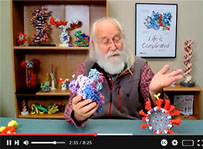
One positive outcome of the ongoing COVID19 pandemic is that we have been forced to explore the use of digital technology to engage teachers in professional learning experiences. As it turns out, we have been surprised by the enthusiastic acceptance of this type of learning by our teachers. While we have always believed that our modeling approach to education is best experienced during in-person summer workshops at the CBM, we now acknowledge that professional learning is not a one-size-fits-all proposition. In-person workshops can be intense, chaotic, exciting,. . . and expensive. But for others, especially those with young families, in-person summer workshops can be stressful and simply impossible.
So we invite you to join us for one of our virtual webinar series. These sessions will be scheduled on Wednesday evenings at 6:30pm (CST) and spaced 2 weeks apart. This will allow teachers who miss one Wednesday evening session to view the recorded session later, or for everyone to revisit the session to reconsider something that didn’t make sense. And to make these virtual sessions hands-on and interactive, we will send each registered participant a collection of physical models and tactile teaching tools in advance of the session, so that you will be able to model along with us during the session.
Finally, another advantage of these virtual sessions is that you are encouraged to invite other colleagues in your school to participate along with you. . . and then have a group discussion following the session. We are happy to waive the course fee for these colleagues, as long as you are willing to share the collection of tactile teaching tools.
Learn more about our professional development courses at https://cbm.msoe.edu/summerCourses/
Nobel Winning Science
CBM’s Outreach Program Experiences Another Brush with Nobel-Winning Science
Posted 12-6-2021
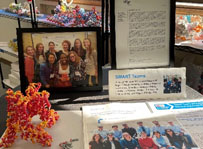
Way back in 2014, the Divine Savior Holy Angels SMART Team worked with two graduate students (Andy Weyer and Katherine Zappa) in Cheryl Stucky’s lab at the Medical College of Wisconsin to create a model of David Julius’ recently reported structure of the pain receptor, TRPVI. We made an extra copy of this model and the SMART Team sent the model to Dr. Julius, along with a letter telling him how much they enjoyed working on this modeling project. That model and the accompanying letter prompted a return Thank You letter from Dr. Julius to the Team (see The Julius Letter).
You can imagine the excitement of the students, their teacher Stacey Strandberg, and everyone else involved in this project when David Julius shared the 2021 Nobel Prize in Physiology or Medicine for this work. Andy and Katherine had recognized the importance of this work in 2014,… and had even suggested that it was of Nobel Prize winning caliber.
We were so impressed with Dr. Julius’ letter back to the SMART Team… and Andy and Katherine’s prediction…, that we had highlighted this SMART Team project in a display (photo at right) that patiently waited in the CBM for the next seven years. And as a final remarkable chapter to this story… when we contacted Dr. Julius to congratulate him on winning the Nobel Prize we were surprised to hear that a framed copy of the letter he had received from the SMART, along with a photo of the SMART Team students, had been hanging on the wall of his office during all those years.
In the CBM, we celebrate science everyday. Sometimes it takes seven years for that celebration to be fully realized.
Learn more about our student modeling programs at https://cbm.msoe.edu/mapsTeams/
A New Antibody MAPS Module
Featuring Prophylactic Nanobodies in the Fight Against SARS-CoV-2
Posted 1-6-2021
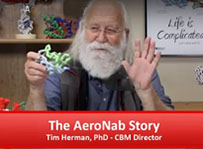
This new MAPS Module will focus on antibodies and their role in our immune system. With everyone’s current focus on a coronavirus vaccine, we thought this would be a timely topic. There are many fascinating stories of current research involving antibodies that your students can explore.
An obvious choice would be the structure of an antibody binding to a coronavirus protein. We will highlight one fascinating story involving a synthetic biology approach to create a nanobody (single-domain antibody) that locks down the coronavirus spike protein into an inactive conformation.
Check it out at https://cbm.msoe.edu/mapsTeams/antibodies.php
For more information on MAPS (Modeling a Protein Story) and how you can get involved in designing and 3D printing your own protein models, visit https://cbm.msoe.edu/mapsTeams/index.php
Check out the Molecule Maker!
An Easy-to-use Web Interface for 3D Printing Small Molecules
Posted 1-6-2021
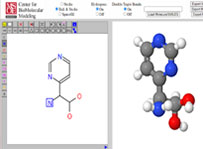
Many schools now have access to low cost 3D printers, but finding 3D print files (.STL) of specific small molecules can be challenging.
With the CBM's new Molecule Maker, students and teachers can draw chemical structures and export their molecule as an .STL file for 3D printing. The left side of the screen is an interactive chemical draw program called JSME Molecular Editor. This chemical draw program communicates with the live Jmol program on the right side of the screen, displaying the molecule in a fully interactive 3-dimensional display.
Any small molecule created with the CBM's Molecule Maker can then be exported as an image (.JPG), a molecular structure file (.MOL) or a 3D print file (.STL) that can be used on any desktop 3D printer. Check it out at https://cbm.msoe.edu/modelingResources/moleculeMaker/
For a more in-depth set of resources on the molecular visualization program Jmol and how to use Jmol to create 3D printed models of proteins and molecular structures, visit our Jmol Training Guide at https://cbm.msoe.edu/modelingResources/jmolTrainingGuide/started.html
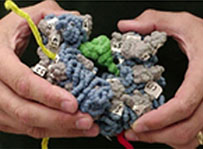
A New CBM Publication
A Strategy for sustained outreach in the molecular biosciences
Posted 1-6-2021
The CBM has just published a paper in the Journal of STEM Outreach describing our work over the past twenty years. Check it out, and see how you relate to various aspects of our program!





